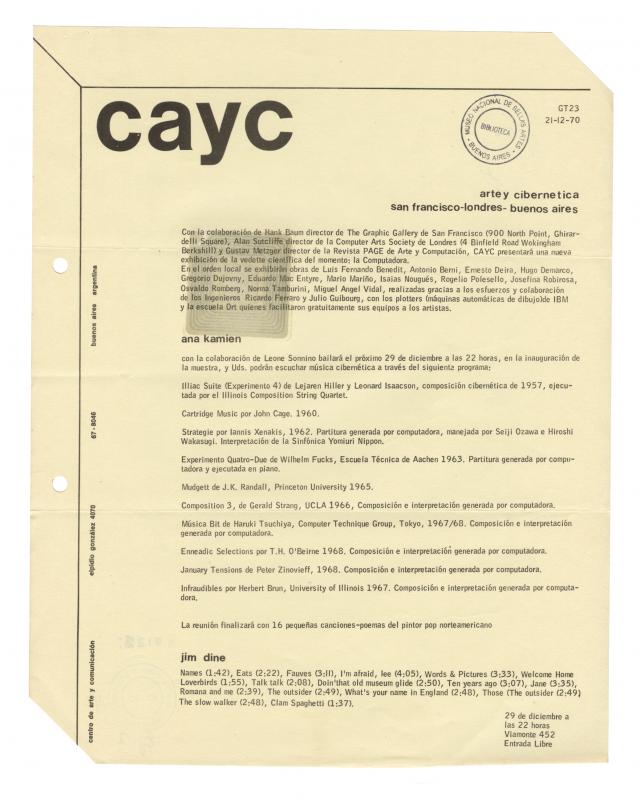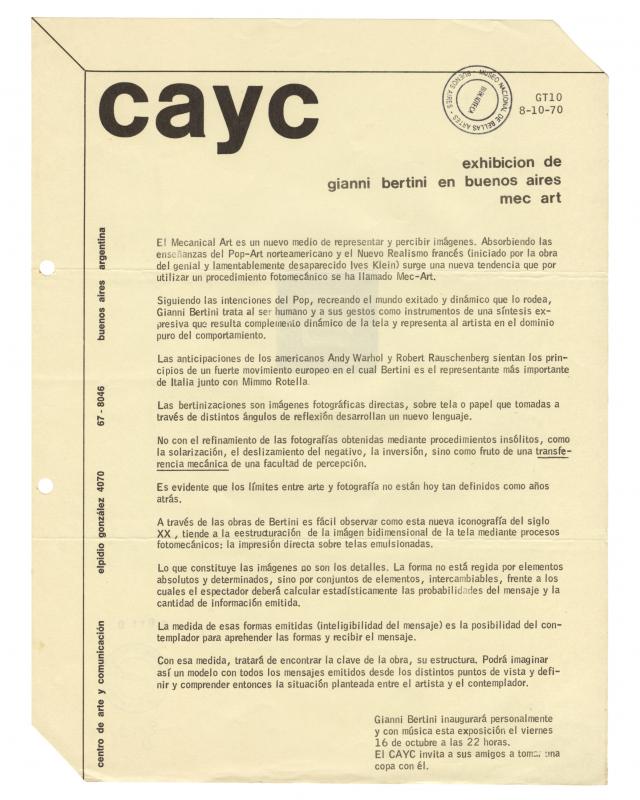Ever since it was founded, the CAYC (Centro de Arte y Comunicación), helmed by the cultural promoter, artist, and businessman Jorge Glusberg, was intended as an interdisciplinary space where an experimental art movement could flourish. The establishment of collaborative networks connecting local and international artists and critics played a key role in this process. The exhibitions shone a light on these exchanges, in which overviews of trends or individual artists introduced the innovations of international contemporary art and made Argentine and Latin American artists better known on the global scene.
On this occasion the center hosted a one-man show of works by Yehuda Neiman. The works were created with photographs that use different techniques for transferring images to emulsified fabrics and/or aluminum to recreate the human body. The artist refers to his somatic work as “woven photomechanical painting” that is usually based on the amplification of a detail of an image that has nothing to do with documenting reality.
Keeping in mind what Glusberg said and reiterating “that contemporary artists are more interested in the process prompted by their works than in the finished work of art,” [see exh. cat. Arte y Cibernética, 1969, GT-23 (doc. no. 1476279)], this exhibition at the CAYC presented one of a number of art trends that were relevant at the time. The movement had recently been enjoying a great deal of international recognition and was thus supported by the French art critic Pierre Restany.
[For other examples of Mec-Art, see GT-10 (doc. no. 1476276)].


